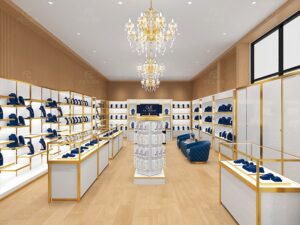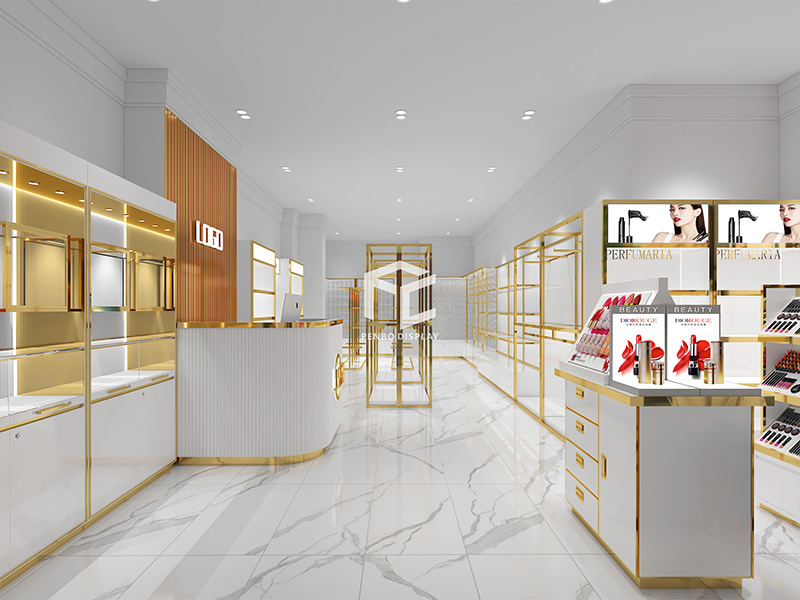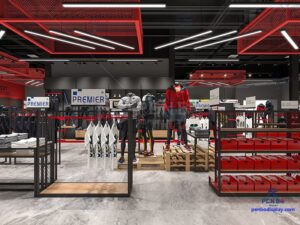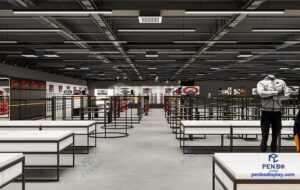
How to Successfully Start a Boutique: A Comprehensive Guide from Planning to Operation
Starting a boutique store is an exciting endeavor that requires careful planning, creativity, and an understanding of your target market. This guide will walk you through everything you need to know to successfully launch and operate a boutique, from understanding the boutique concept to legal considerations, market trends, store design, and target market analysis.
What is a boutique store?
A boutique store is a small, specialized retail shop that offers a curated selection of products, often focusing on a specific niche or theme. Unlike larger department stores or chain retailers, boutique stores are known for their unique inventory, personalized shopping experiences, and often exclusive or high-quality items.
Key Characteristics of a Boutique Store:
- Specialized Product Range: Boutique stores typically offer a narrow but deep selection of products within a particular category, such as fashion, jewelry, home decor, or beauty products. The items are often unique, handmade, or sourced from niche brands that are not widely available.
- Personalized Service: A hallmark of boutique stores is their focus on providing personalized customer service. Staff often have deep knowledge of the products and can offer tailored recommendations or styling advice.
- Curated Shopping Experience: The shopping environment in a boutique is usually carefully designed to reflect the store’s brand identity. This includes everything from the store layout and decor to the music and scents used in the space.
- Exclusive or Limited-Edition Items: Many boutique stores offer exclusive products or limited-edition items that cannot be found in larger retail chains. This exclusivity can attract customers looking for unique or hard-to-find products.
- Local or Independent Ownership: Boutique stores are often independently owned, sometimes by local entrepreneurs or designers. This independent ownership often allows for greater flexibility in product selection and store presentation.
Examples of Boutique Stores:
- Fashion Boutiques: These stores might specialize in high-end clothing, designer brands, or specific styles like bohemian or vintage fashion.
- Jewelry Boutiques: Focused on unique, often handcrafted jewelry pieces that may include custom designs.
- Home Decor Boutiques: Offering curated selections of furniture, art, and home accessories that reflect a specific aesthetic or theme.
- Beauty Boutiques: Specializing in skincare, cosmetics, and beauty tools, often featuring niche or luxury brands.
Market Position:
Boutique stores often cater to a specific demographic that values quality, uniqueness, and a personalized shopping experience over mass-market appeal. Because of their specialized nature, boutiques can charge premium prices and build a loyal customer base.
In essence, a boutique store is about offering a distinctive, high-quality shopping experience that appeals to consumers looking for something beyond the ordinary.
2024 Boutique Store Retail Industry: Current State and Market Trends Analysis Report
1. Introduction
The boutique store retail sector is undergoing significant transformation driven by technological advancements, evolving consumer behaviors, and an increasing focus on sustainability. In 2024, boutique stores have positioned themselves as key players in the retail market by offering personalized experiences and niche products that cater to the demands of modern consumers. This report provides an in-depth analysis of the current state and market trends in the boutique store retail industry, supported by key statistics and visual data.
2. Market Overview
2.1 Market Size and Growth
The global boutique store market is projected to reach a staggering $374.9 billion by 2024, with the U.S. clothing boutique market contributing $27.9 billion to this figure. The growth, albeit modest at 0.8% in the U.S., is indicative of the sector’s resilience amid economic challenges like inflation and high-interest rates. A significant driver of this growth is the rise in online sales, which are expected to grow to $86 billion by 2025 globally.
2.2 Consumer Behavior Shifts
In 2024, Gen Z and Millennials dominate the boutique market, accounting for 40% and 45% of industry spending, respectively. These demographics favor brands that offer unique, personalized, and sustainable products. While 58% of boutique customers shop online for convenience, 42% still prefer the tactile, immersive experience of in-store shopping, reflecting a balanced approach between digital and physical retail experiences.
2.3 Revenue and Profitability
Boutique stores are maintaining steady revenue streams, with the average profit margin around 4%. Despite economic pressures, the industry continues to thrive by optimizing pricing strategies and improving supply chain efficiencies to manage costs effectively.
Legal Considerations for Starting a Boutique Store
Choosing the Right Business Structure
- Sole Proprietorship: Simple to set up but with full personal liability.
- Partnership: Involves shared ownership and liability.
- Limited Liability Company (LLC): Offers liability protection, separating personal assets from business debts.
- Corporation: Provides the highest level of liability protection but is more complex to establish and maintain.
Registering Your Business
- Business Name Registration: Register a “Doing Business As” (DBA) name with your local government if operating under a name other than your own.
- EIN (Employer Identification Number): Required for tax purposes if you plan to hire employees or operate as a corporation or partnership.
Obtaining Necessary Licenses and Permits
- General Business License: Required by most cities or counties.
- Sales Tax Permit: Mandatory in most states for collecting sales tax.
- Zoning Permits: Ensure your store’s location is zoned for retail use.
Compliance with Employment Laws
- Hiring Employees: Adhere to local, state, and federal employment laws, including minimum wage, overtime pay, and workplace safety regulations.
- Workers’ Compensation Insurance: Required in most states if you have employees.
Intellectual Property Protection
- Trademarks: Protect your store’s name, logo, and unique product names.
- Copyrights and Patents: Protect original designs or products to prevent others from copying them.
Compliance with Consumer Protection Laws
- Return and Refund Policies: Ensure they comply with consumer protection laws.
- Advertising Laws: All marketing and advertising materials must be truthful and not misleading.
Health and Safety Regulations
- Health Permits: Required if selling products like cosmetics or food items.
- Fire Safety Compliance: Obtain a fire department permit to ensure your store meets local fire codes.
Music Licensing
- Public Performance License: Required if playing music in your boutique.
Insurance Requirements
- General Liability Insurance: Protects against claims related to accidents, injuries, and property damage.
- Property Insurance: Covers the store’s physical assets, including inventory and fixtures.
- Business Interruption Insurance: Covers loss of income if your business is temporarily closed due to a covered event.
Contracts and Agreements
- Leases and Rental Agreements: Ensure clarity on terms and conditions, including rent, duration, and maintenance responsibilities.
- Supplier Contracts: Establish clear terms with suppliers regarding payment, delivery, and product returns.
Tax Compliance
- Sales Tax Collection: Ensure collection and remittance to the appropriate authorities.
- Income Tax Filing: Maintain accurate financial records for filing state and federal taxes.
Environmental Regulations
- Waste Disposal: Adhere to local regulations regarding waste disposal, especially if your boutique produces hazardous waste.
Target Market Analysis
Understanding your target market is crucial to the success of your boutique store. This involves identifying the specific group of customers you aim to attract, analyzing their preferences, and tailoring your offerings to meet their needs.
Steps for Analyzing Your Target Market
-
Conduct Market Research:
- Demographics: Identify the age, gender, income level, occupation, and location of your potential customers.
- Psychographics: Understand the lifestyle, values, and interests of your target audience.
- Behavioral Data: Analyze shopping habits, brand loyalty, and preferred shopping channels.
-
Analyze Market Trends:
- Fashion Trends: Stay updated on trends that resonate with your target market.
- Consumer Spending Habits: Adapt to changing spending habits, offering value for money or unique experiences.
-
Competitor Analysis:
- Direct Competitors: Analyze other boutiques targeting the same demographic.
- Indirect Competitors: Consider large retailers and online platforms attracting your target market.
-
Tailor Your Offerings:
- Product Selection: Offer products that resonate with your audience, such as eco-friendly items or exclusive designs.
- Pricing Strategy: Align pricing with your audience’s income levels and perceived value of your products.
-
Engage with Your Audience:
- Customer Interaction: Use surveys, social media, and in-store feedback to stay attuned to customer preferences.
- Data Analytics: Track product popularity, customer segments, and peak sales periods.
Statistical Insights
- Market Size: The global boutique market is expected to grow at a CAGR of 5.5% from 2023 to 2028.
- Consumer Preferences: 60% of boutique shoppers prioritize quality over price, indicating a strong market for premium products.
- E-commerce Trends: 58% of consumers prefer to shop online for boutique items, highlighting the importance of a strong online presence.

How to Design and Decorate Your Boutique Store
Designing a boutique store requires aligning aesthetics with functionality to create an inviting and memorable shopping experience. Here’s a guide to help you design a boutique store that stands out:
Define Your Brand Identity
- Visual Theme: Reflect your brand’s identity through store design, whether minimalist, vintage, bohemian, or luxurious.
- Color Scheme: Choose colors that represent your brand and appeal to your target market.
Create an Inviting Storefront
- Window Displays: Use eye-catching displays to attract passersby.
- Signage: Ensure clear, brand-aligned signage to set your store apart from competitors.
Layout and Space Utilization
- Flow and Navigation: A well-thought-out boutique store design ensures a layout that guides customers naturally through the space, optimizing flow and enhancing the shopping experience.
- Product Placement: Place popular items at eye level and create focal points for special collections.
- Fitting Rooms: Ensure fitting rooms are spacious, well-lit, and comfortable.
Lighting and Ambiance
- Natural Lighting: Maximize natural light for a welcoming atmosphere.
- Accent Lighting: Highlight key products or areas to draw attention.
- Ambient Lighting: Create a mood that reflects your brand, such as warm, soft lighting for a cozy feel.
Furniture and Fixtures
- Display Fixtures: Invest in high-quality, versatile boutique display fixtures that showcase products effectively and align with your store’s aesthetic.
- Seating Areas: Provide comfortable seating for customers, especially in fashion boutiques.
- Storage Solutions: Integrate storage that is both functional and aesthetically pleasing.
In-Store Technology
- Point-of-Sale Systems: Implement efficient POS systems for smooth transactions.
- Interactive Displays: Use touchscreens or digital catalogs to engage tech-savvy customers.
- Music and Sound: Play music that enhances the shopping experience, aligned with your brand’s identity.
Eco-Friendly Design Choices
- Sustainable Materials: Use eco-friendly materials for fixtures, displays, and packaging.
- Energy-Efficient Lighting: Install LED lighting to reduce energy consumption.
- Waste Reduction: Implement recycling programs and minimize waste in store operations.
Customer Comfort and Convenience
- Rest Areas: Include comfortable seating for customers to relax.
- Child-Friendly Spaces: Offer a play area for children if your target market includes families.
- Accessibility: Ensure your store is accessible to all customers, including those with disabilities.
Visual Merchandising Strategies
- Storytelling Displays: Utilize boutique display racks in your storytelling displays to create visually engaging setups that make products more relatable and memorable for customers.
- Seasonal Themes: Update displays regularly to reflect seasonal trends or holidays.
- Cross-Merchandising: Pair complementary items together to encourage multiple purchases.
Final Thoughts
Starting a boutique store in 2024 offers a unique opportunity to tap into a growing market driven by consumer demand for personalized, high-quality, and sustainable products. By understanding the boutique concept, staying informed about industry trends, complying with legal requirements, and creating a well-designed store that resonates with your target market, you can establish a successful boutique that stands out in the competitive retail landscape.
Whether you’re just beginning your journey or looking to enhance your existing boutique, this comprehensive guide provides the insights and strategies you need to succeed.
How to increase sales in a boutique store
Increasing sales in a boutique store involves a combination of strategic marketing, exceptional customer service, and creating an engaging shopping experience. Here’s a comprehensive guide on how to boost sales in your boutique:
1. Enhance Customer Experience
- Personalized Service: Train your staff to offer personalized recommendations based on customers’ preferences and purchase history. This can create a loyal customer base that values the unique shopping experience.
- Loyalty Programs: Implement a loyalty program that rewards repeat customers with discounts, special offers, or exclusive access to new products.
- In-Store Events: Host events like fashion shows, product launches, or workshops to engage customers and draw them into the store.
2. Optimize Store Layout and Display
- Visual Merchandising: Use eye-catching displays to highlight new arrivals, best-sellers, or themed collections. Rotating displays regularly can keep the store looking fresh and encourage repeat visits.
- Store Layout: Ensure your store layout is intuitive, with clear signage and easy navigation. Group similar products together to encourage cross-selling.
3. Leverage Digital Marketing
- Social Media Presence: Use platforms like Instagram, Facebook, and Pinterest to showcase your products, share customer testimonials, and promote sales or events. Engaging content, such as styling tips or behind-the-scenes looks, can attract followers and drive traffic to your store.
- Email Marketing: Build an email list to send out newsletters, exclusive offers, and event invitations. Personalized emails based on customer preferences can lead to higher conversion rates.
- E-commerce Integration: If feasible, offer online shopping options through a website or social media platforms. This can expand your customer base beyond the local area.
4. Offer Exclusive Products
- Limited Editions: Introduce limited-edition items or exclusive collections that can only be found in your store. Scarcity can create urgency and drive sales.
- Collaborations: Partner with local artists, designers, or brands to create unique products that differentiate your store from competitors.
5. Implement Strategic Pricing
- Upselling and Cross-Selling: Train staff to suggest complementary products that enhance the customer’s purchase, such as accessories with clothing items or skincare with beauty products.
- Bundle Offers: Create bundles of related products at a discounted price to increase the average transaction value.
- Seasonal Sales: Plan sales around holidays, seasons, or special events to attract deal-seeking customers. Flash sales or limited-time offers can also create a sense of urgency.
6. Enhance Online Reviews and Reputation
- Encourage Reviews: Ask satisfied customers to leave reviews on Google, Yelp, or social media. Positive reviews can significantly influence new customers.
- Respond to Feedback: Address both positive and negative reviews promptly. Showing that you care about customer feedback can build trust and encourage repeat business.
7. Build Community Engagement
- Local Partnerships: Collaborate with nearby businesses for cross-promotions or joint events. This can introduce your store to a broader local audience.
- Support Local Causes: Sponsor local events, charities, or community initiatives. This not only builds goodwill but also increases your store’s visibility in the community.
8. Utilize Data and Analytics
- Customer Data: Analyze customer purchase history, preferences, and demographics to tailor your product offerings and marketing efforts.
- Sales Data: Monitor sales trends to identify which products are performing well and which may need more promotion or adjustments in pricing.
9. Stay Updated with Trends
- Market Research: Keep an eye on industry trends, competitor strategies, and customer preferences. Adapting to changing trends can help you stay relevant and attract new customers.
- Innovation: Be open to trying new things, whether it’s introducing new product lines, experimenting with store layouts, or offering new services like personal styling sessions.
10. Foster a Strong Brand Identity
- Consistent Branding: Ensure that your store’s branding, from the logo to the interior design to the packaging, is consistent and reflects the store’s identity.
- Storytelling: Share the story behind your products, the boutique, or your brand. This can create a deeper connection with customers who appreciate the uniqueness and authenticity of your store.
By focusing on these strategies, you can enhance your boutique store’s appeal, attract more customers, and ultimately increase sales.
Boutique store vs. chain store: Pros and cons
When deciding between opening a boutique store or a chain store, it’s important to weigh the pros and cons of each to determine which model aligns better with your business goals. Here’s a comparison of the two:
Boutique Store
Pros:
- Personalized Experience:
- Customer Service: Boutiques often provide a more personalized shopping experience, with staff who can offer tailored recommendations and build strong customer relationships.
- Unique Products: Boutiques typically offer unique or niche products that aren’t found in larger chain stores, catering to specific tastes and preferences.
- Creative Freedom:
- Brand Identity: Owners have full control over the brand’s image, product selection, store design, and marketing strategies, allowing for a distinct identity.
- Flexibility: Boutiques can quickly adapt to market trends and customer demands, making changes without the red tape that larger chains might encounter.
- Community Engagement:
- Local Support: Boutiques often become an integral part of the local community, building loyal customer bases and benefiting from word-of-mouth referrals.
- Collaborations: Easier to collaborate with local artists, designers, or businesses, further strengthening community ties.
- Lower Initial Investment:
- Startup Costs: Typically, starting a boutique requires a smaller investment than opening a chain store, as it involves fewer inventory, staff, and operational costs.
Cons:
- Limited Resources:
- Marketing and Advertising: Smaller marketing budgets can limit a boutique’s ability to reach a wider audience.
- Economies of Scale: Boutiques may pay more per unit for inventory compared to chain stores, which can negotiate better prices due to larger purchase volumes.
- Brand Recognition:
- Market Reach: Without the brand recognition that chains have, boutiques may struggle to attract customers, especially in competitive markets.
- Growth Challenges:
- Expansion: Scaling a boutique business can be more challenging due to limited resources and the need to maintain the unique identity that sets it apart.
- Risk: The success of a boutique often hinges on the owner’s vision and management, making it more vulnerable to market changes or personal circumstances.
Chain Store
Pros:
- Brand Recognition:
- Customer Trust: Chain stores benefit from established brand names that customers recognize and trust, making it easier to attract and retain customers.
- Consistency: Customers know what to expect in terms of products, pricing, and service, which can drive repeat business.
- Economies of Scale:
- Cost Efficiency: Chain stores can buy in bulk, reducing the cost per unit of goods, which can lead to higher profit margins.
- Resources: Larger budgets for marketing, technology, and staff training can enhance operational efficiency and customer reach.
- Growth and Expansion:
- Scalability: Chain stores have the infrastructure in place for rapid expansion, with standardized processes that make it easier to open new locations.
- Market Penetration: With multiple locations, chain stores can dominate a market, making it difficult for competitors to gain a foothold.
- Support Systems:
- Operational Support: Chains benefit from established systems for inventory management, staff training, marketing, and more, reducing the workload on individual store managers.
- Risk Mitigation: The success of individual locations is supported by the overall brand, reducing the impact of a single store’s underperformance.
Cons:
- Limited Flexibility:
- Corporate Policies: Chain stores must adhere to corporate guidelines, limiting the ability to tailor the shopping experience or product offerings to local markets.
- Slower Adaptation: Changes in market trends or customer preferences can take longer to implement across a chain, reducing agility.
- Higher Initial Investment:
- Startup Costs: Opening a new location for a chain store typically requires a significant investment in inventory, staff, and real estate, as well as franchise or licensing fees if applicable.
- Less Personal Connection:
- Customer Experience: The uniformity of chain stores can make the shopping experience feel impersonal, which may alienate customers looking for a more personalized experience.
- Community Engagement: Chain stores might struggle to build the same level of community engagement as local boutiques, as they are often seen as less tied to the local area.
- Brand Vulnerability:
- Reputation Risks: A single negative incident at one location can impact the brand’s reputation across all locations, leading to widespread damage.
Conclusion
Choosing between a boutique store and a chain store depends on your business goals, available resources, and the market you intend to serve. If you value creative control, community engagement, and offering unique products, a boutique store might be the better option. On the other hand, if you’re looking for brand recognition, scalability, and access to greater resources, a chain store may offer more opportunities for growth.
Frequently asked questions about clothing boutique businesses
How much does it cost to open a boutique store?
Opening a boutique store can cost anywhere from $20,000 to $300,000 or more, depending on factors such as location, store size, and the type of boutique. Key expenses include lease costs (ranging from $1,000 to $10,000 per month), renovation and design (typically between $5,000 and $50,000), initial inventory ($10,000 to $50,000), and marketing and branding ($1,000 to $5,000). Additional costs include utilities, insurance, licensing and permits, staffing, and miscellaneous expenses like a POS system and office supplies. It’s crucial to develop a detailed business plan and budget to understand the specific costs for your boutique.
How profitable is a boutique store business?
The profitability of a boutique store can vary widely based on factors such as location, niche, and management. Generally, boutiques can be quite profitable, with profit margins typically ranging from 5% to 20%. Key drivers of profitability include:
- Location: Prime locations with high foot traffic often lead to higher sales and better profitability.
- Product Selection: Curating unique, high-quality products can attract customers and command higher price points.
- Pricing Strategy: Effective pricing strategies, including markups and discounts, can significantly impact profitability.
- Operational Efficiency: Managing costs effectively, such as controlling inventory and minimizing overhead, enhances profit margins.
- Customer Experience: Offering exceptional customer service and a memorable shopping experience can drive repeat business and boost profitability.
Overall, with a well-planned strategy and efficient operations, boutique stores have the potential to be highly profitable businesses.
What are the essential elements of boutique store design?
Answer: Essential elements of boutique store design include:
- Layout: Create a functional layout that guides customers through your store and highlights key products.
- Visual Merchandising: Use attractive displays, signage, and lighting to showcase your products effectively.
- Branding: Ensure that the store design reflects your brand’s identity and aesthetic.
- Customer Experience: Design with customer comfort in mind, including fitting rooms, seating areas, and clear signage.
- Lighting: Utilize lighting to enhance the ambiance and highlight merchandise.
What are the common challenges in running a boutique store?
Answer: Common challenges include:
- Competition: Standing out in a competitive market can be difficult.
- Inventory Management: Balancing inventory levels to avoid overstocking or stockouts.
- Customer Acquisition: Attracting and retaining customers in a changing market.
- Cash Flow: Managing cash flow to cover operational expenses and invest in growth.
- Trends: Staying updated with fashion trends and customer preferences.
Business Tips for Successful Operation
1. Customer Service Excellence Exceptional customer service differentiates your kiosk from competitors. Train your staff to be knowledgeable about fragrances, provide personalized recommendations, and create a welcoming atmosphere. A positive customer experience can lead to repeat business and word-of-mouth referrals.
2. Marketing and Promotion Leverage both traditional and digital marketing strategies to drive traffic to your kiosk. Utilize social media platforms to promote your products, engage with customers, and run targeted ads. In-store promotions, such as discounts and loyalty programs, can also boost sales and attract new customers.
3. Adapting to Trends Stay updated on industry trends and adapt your product offerings and marketing strategies accordingly. The perfume industry is dynamic, with new trends emerging regularly. Being flexible and responsive to these changes can help you stay competitive.
4. Sales Strategies Develop effective sales strategies to increase conversions. This could include upselling and cross-selling techniques, bundling products, or offering exclusive deals on certain items. Train your staff to recognize opportunities to maximize sales while ensuring customer satisfaction.
Share:
Table of Contents
Shop Fixtures Manufacturer
We are a manufacturer of display products established in 1995 in Guangzhou, China. We specialize in a wide range of retail store fixtures,including display case,showcase,racks,counters,stands , etc. Providing customers with one-stop merchandising solutions.
Recent Posts
Subscribe to Newsletter
Get all the latest information on shop design ideas, sales and offers. Subscribe to the newsletter:


